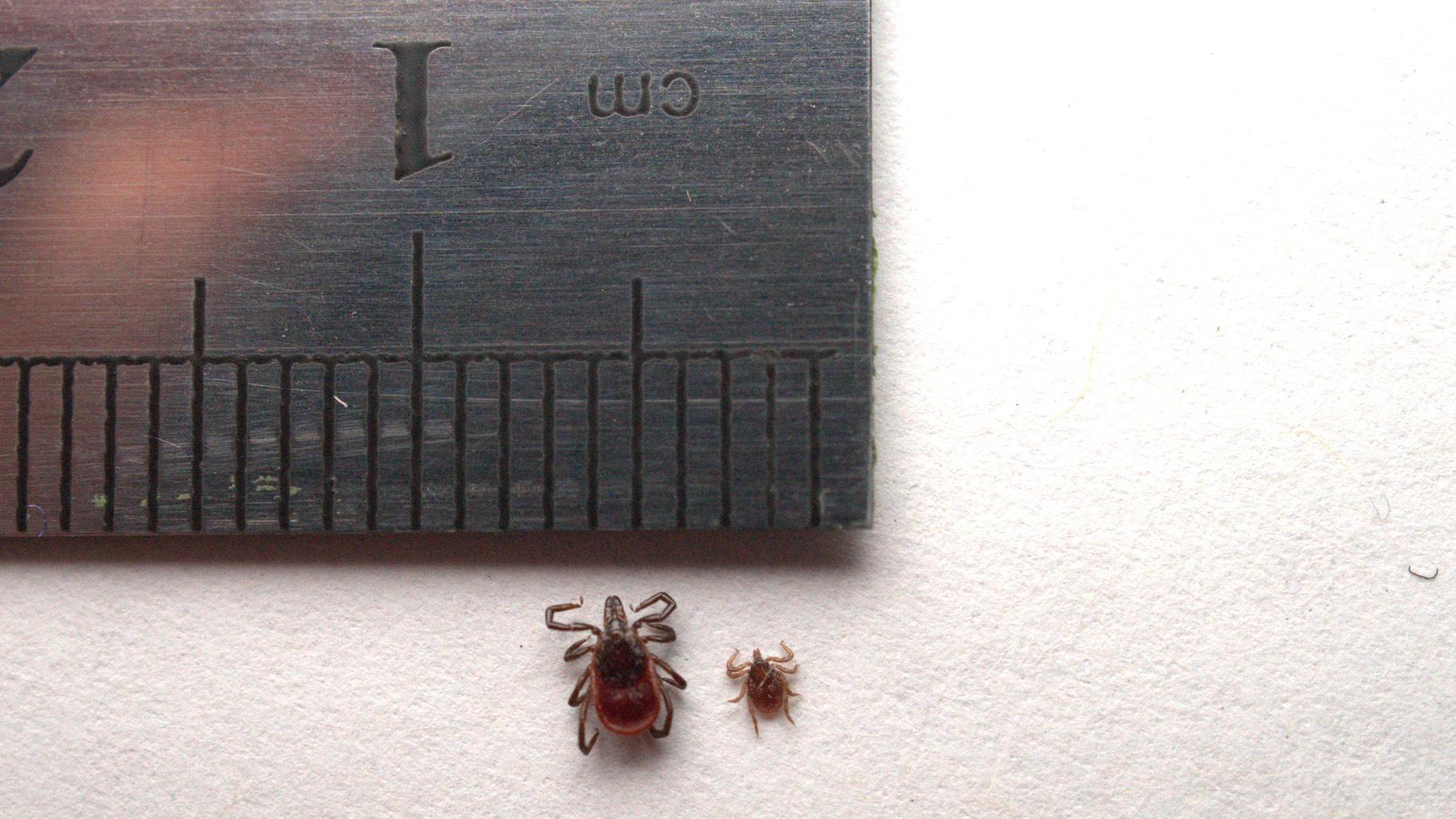When it comes to ticks, Kim Fake has heard it all.
“There are so many myths around ticks, especially when it comes to how to remove them,” said Fake, wildlife research coordinator at the Lincoln Park Zoo. “People say to put perfume on them. Or to burn it off. You’re actually more likely to hurt yourself if you try that.”
For the record, ticks won’t lay eggs inside a person, Fake said.
And no, they won’t grow a new head if the tiniest bit of mouth part is left behind following an extraction, she said, sticking a pin is another falsehood.
“These myths are so prevalent, they’re taken as truth,” said Fake.
The truth about ticks is something Fake and other researchers at the zoo have begun investigating in earnest by surveying which ticks are present in the Chicago region, where they’re found, the density of the population and what pathogens they’re carrying.
A lot of Fake’s work involves minimizing human-wildlife conflict, or finding ways for humans and wildlife to coexist. In terms of ticks, that means gaining a better understanding of the risks humans face from tick-borne diseases as people push into formerly rural or exurban areas.
The survey aims to uncover clues about the effects of climate change and urban sprawl on ticks: Are their ranges expanding or decreasing as temperatures rise? As development destroys habitat, do ticks’ host animals decline, and thereby ticks? Or do ticks adapt and find new hosts in urban areas that they like even more?
“We’re not sure,” she said.
 Researchers from Lincoln Park Zoo use drag cloths to hunt for ticks. And yes, they've found them in Chicago parks. (Courtesy of Lincoln Park Zoo)
Researchers from Lincoln Park Zoo use drag cloths to hunt for ticks. And yes, they've found them in Chicago parks. (Courtesy of Lincoln Park Zoo)
To get a sense of the current state of the tick population, researchers from the zoo have taken their flannel drag cloths to 15 sites in Cook, Lake and DuPage counties, scraping vegetation to mimic the movement of animals as a way to lure the ticks. Any ticks they snag are removed and placed in vials of ethanol to preserve for pathogen testing.
In 2021, they detected populations of blacklegged ticks and the Lyme pathogen in all three counties, including within Chicago. So count “ticks are only found deep in the forest” as another myth.
In the Chicago region, the blacklegged tick (commonly called the deer tick) is the species of greatest concern, as the carrier of Lyme disease. It’s actually the nymph (or immature) stage of the tick that represents the biggest threat, in part because it’s the most active during the time of year when people are outdoors, but also because nymphs are so small, Fake said.
These ticks tend to hang out in woody areas, forest preserves, parks or places with tall grasses, and they prefer humidity and shade to keep from drying out between blood meals.
 The immature nymph stage of ticks poses the greatest risk in part because it's so tiny as to be almost undetectable. (Courtesy of Lincoln Park Zoo)
The immature nymph stage of ticks poses the greatest risk in part because it's so tiny as to be almost undetectable. (Courtesy of Lincoln Park Zoo)
Because the ticks need to feed for days in order to fill up on blood, they stealthily latch onto parts of the human body where they’ll be hard to detect. That means the hair on a person’s head, the backs of knees, the groin or even inside a belly button, Fake said.
People should check for ticks whenever they’ve been hanging out in tick-friendly habitat but finding one is not a cause for instant panic, she said, contrary to popular opinion. “Try to remove within 24 hours. It’s not going to affect you immediately,” Fake said.
Grab the tick with tweezers, as close to the skin as possible, and pull with even force. “Anything left will be like a splinter,” she said.
Lyme disease is the greatest concern when it comes to the blacklegged tick. Symptoms are similar to the flu, or even COVID-19, and the disease can stump doctors unless they're made aware of a patient's exposure to the outdoors. The telltale bull's-eye rash associated with Lyme disease is only present in 70% of cases, Fake said.
The good news, she added, is that Lyme disease is not only treatable with antibiotics but also preventable by avoiding tick bites in the first place. Simple steps to follow: Know where ticks hang out (see above); use an insect repellent with DEET; walk down the center of trails, steering clear of brush and grasses on the edges; and cover up with lightweight pants (preferably tucked into socks) and long-sleeved shirts.
“Don’t be scared, be prepared,” Fake said. “Get out there and enjoy nature.”
Note: This story was originally published June 27. It has been updated to include our “Chicago Tonight” conversation.
Contact Patty Wetli: @pattywetli | (773) 509-5623 | [email protected]


